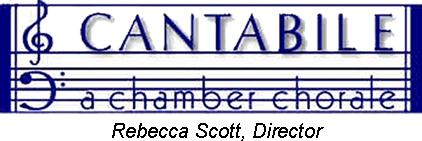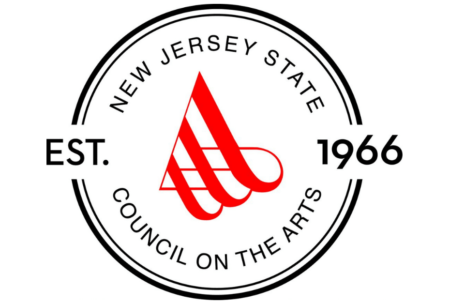Grant funding has been provided by the Middlesex County Board of County Commissioners through a grant award from the Middlesex County Cultural and Arts Trust Fund.
It’s All About the Birds and the Bees – Program Notes – Dec. 2. 2023
Nikcolai Rimsky-Korsakov’s Flight of the Bumblebee comes from his fairy tale operas which were filled with veiled and atmospheric emotional content and allowed him to display his mastery of colorful and exotic orchestra sounds. One of these operas, “The Tale of Tsar Saltan” premiered in Moscow in 1900 and it is the source of the infamous “Flight of the Bumblebee.” It is based on a poem by Pushkin and involves the son of the Tsar who is disowned because he is born as an unspeakable monster. Rejected by the Tsar the prince is thrown into a barrel and tossed into the sea, but he survives. When the prince grows up, he saves a magical swan from death, who in gratitude turns the young prince into a bumblebee so he can fly over the sea and, so disguised as a can return to his father. The musical interlude you hear accompanies the flight of the prince traveling back to reunite with the Tsar.
Mariposa is the second movement of Eric Ewazen’s choral suite “Second April,” a setting of poetry by Edna St. Vincent Millay, which was commissioned and premiered by Cantabile in 2013. Mariposa (Butterfly) floats in ¾ time over a running sixteenth note figure in the bass of the piano, which stops suddenly as soft chords announce that “death comes in a day or two.” As the butterflies continue their short flight (most only live a month!) with the return of the running left hand figure, we are encouraged to enjoy and appreciate the moment. The music starts and stops again, reminding us that our life span is short as well.
Mariposa
Butterflies are white and blue.
In this field we wander through.
Suffer me to take your hand.
Death comes in a day or two.
All the things we ever knew.
Will be ashes in that hour,
Mark the transient butterfly,
How he hangs upon the flower.
Suffer me to take your hand.
Suffer me to cherish you.
Till the dawn is in the sky
Whether I be false or true,
Death comes in a day or two.
The Bee composed by Frank Bridge is a setting of an Alfred Lord Tennyson text in the style of a fanciful scherzo, complete with buzzing effects.
The Bee
The bee buzzed up in the heat.
“I am faint for your honey, my sweet.”
The flower said, “Take it, my dear;
For now is the spring of the year.
So, come, come!
“Hum!”
And the bee buzzed down from the heat.
And the bee buzzed up in the cold.
When the flower was withered and old.
“Have you still any honey, my dear?”
She said, “It’s the fall of the year,
But come, come!”
“Hum!”
And the bee buzzed off in the cold.
Text: Alfred Lord Tennyson
The Silver Swan is an anonymous text, set most famously as a madrigal by Orlando Gibbons. His “Madrigals and Motets of 5 Parts” typically contain deeply felt and very personal settings of texts that are, for the most part, of a moral or philosophical nature. “The Silver Swan” is considered a masterpiece of late madrigalist style.
The silver swan, who living had no note,
When death approached, unlocked her silent throat;
Leaning her breast against the reedy shore,
Thus sang her first and last, and sang no more:
“Farewell, all joys; Oh death, come close mine eyes;
More geese than swans now live, more fools than wise.”
El Cant dels Ocells is a famous Catalan Christmas carol and lullaby. It’s many verses tell of nature’s joy at learning of the birth of Jesus Christ in a stable in Bethlehem. It describes eagles, sparrows, greenfinches, siskins, linnets, thrushes, nightingales, wrens, woodpeckers, canaries, tits, blackbirds, and partridges among the many birds coming from afar to see and celebrate the Messiah. We sing a solo opening verse in Catalan followed by a cello version which was made famous by Pablo Casals during his exile from Spain.
EL CANT DELS OCELLS THE SONG OF THE BIRDS
| En veure despuntar | Upon this holy night |
| El major lluminar | When God’s star appears |
| En la nit mes joiosa | And floods the earth with brightness |
| Els ocellettes cantant a festejarlo van | Birds voices rise in song and warbling all night long |
| Amb sa veu melindrosa | Express their glad hearts’ lightness |
I Shall Not See the Shadows (Movement 10) from “The Lost Birds” by Christopher Tin is a haunting musical tribute to bird species driven to extinction by mankind. Lamenting how the sky was once full of passenger pigeons in North America, Tin in his program notes writes, “To pay proper tribute to these birds, I adopted a distinctly 19th-century musical vocabulary: one based on the tunefulness of folk songs, with a string orchestra accompaniment that’s both soaring and melancholy. And to put their story into words, I turned to four 19th-century poets–Emily Dickinson, Christina Rossetti, Edna St. Vincent Millay, and Sara Teasdale. These women saw their world transform from a pastoral society to an industrial one—one in which humans, for the first time, began disastrously reshaping the environment. And the poems which I selected depict an increasingly fraught world: first without birds, and ultimately without humans. We are now in the 21st century, and our tools for affecting the world around us– emissions, pesticides, deforestation–are more indiscriminate and cruelly efficient. As bird, fish, animal, and insect populations crash around us, we increasingly find ourselves in a silent world–one in which the songs of birds are heard less and less. We hope that the silence can be filled by more voices speaking up on behalf of these lost birds–for their sake, and for ours.” The text for Movement 10 which we perform is from “When I am dead, my dearest” by Christina Rosetti and “The Saddest Noise, the Sweetest Noise,” by Emily Dickenson.
“When I am Dead, My Dearest” by Christina Rosetti
When I am dead, my dearest,
Sing no sad songs for me;
Plant thou no roses at my head,
Nor shady cypress tree:
Be the green grass above me
With showers and dewdrops wet;
And if thou wilt, remember,
And if thou wilt, forget.
I shall not see the shadows,
I shall not feel the rain;
I shall not hear the nightingale
Sing on, as if in pain:
And dreaming through the twilight
That doth not rise nor set,
Haply I may remember,
And haply may forget.
“The Saddest Noise, the Sweetest Noise” by Emily Dickinson
Between the March and April
line—that magical frontier
Beyond which summer hesitates,
Almost to heavenly near.
The saddest noise, the sweetest noise,
The maddest noise that grows
and grows,—The birds they
made it in the spring.
At night’s delicious close,
The saddest noise I know.
Sarah Quartel’s Here on These Branches is a bewitching setting telling the story of a young girl walking in an enchanted forest, mesmerized by dreamy, ancient songs sung by a chorus of chickadees. An atmospheric ostinato played on finger cymbals and claves accompanies the voices, and Quartel sets a strong melodic line against the warm harmonies of the birdsong. The young woman sprouts wings and takes flight with the birds, while below them a young auburn-haired girl enters the forest, bewildered by their singing— maybe she will join them in flight.
O Magnum Mysterium is a chant from the Matins of Christmas which occurs during the hours marking the divisions of the day in terms of fixed times of prayer. About his setting, Morten Lauridsen writes: “For centuries, composers have been inspired by the beautiful O Magnum Mysterium text with its depiction of the birth of the newborn king amongst lowly animals and shepherds. This affirmation of God’s grace to the meek and the adoration of the Blessed Virgin are celebrated in my setting through a quiet song of profound inner joy.”
O MAGNUM MYSTERIUM
| O magnum mysterium et admirable sacramentum | O great mystery and wondrous sacrament |
| Ut animalia viderent Dominum natum, jacentum in praesepio! | That animals should see the newborn Lord, lying in their manger! |
| Beata Virgo, cujus viscera meruerunt portare Dominum Christum. Alleluia! | Blessed is the Virgin whose womb was worthy to bear the Lord Jesus Christ. Alleluia! |
A Place in the Choir (All God’s Critters) by Bill Staines is a timeless folk song with a simple and upbeat tune that carries a message about inclusivity and unity. The positive energy of this arrangement by Erica Phare-Berge is sure to leave you feeling uplifted and inspired. This cheerful song highlights the diversity in nature but is also a reminder to find our place in the choir while celebrating the unique song that each of us has to offer.
Chorus: All God’s critters got a place in the choir
Some sing low and some sing higher,
Some sing out loud on a telephone wire,
Some just clap their hands, or paws, or anything they’ve got now
Listen to the top where the little bird sings
On the melodies and the high notes ringing,
And the hoot owl cries over everything
And the jaybird disagrees!
Singing in the night time, singing in the day,
The little duck quacks, and he’s on his way
The possum ain’t got much to say
And the porcupine talks to himself!
Chorus
Listen to the bass, it’s the one on the bottom
Where the bullfrog croaks and the hippopotamus
Moans and groans with a big t’do
And the old cow just goes moo!
The dogs and the cats they take up the middle
While the honeybee hums and the cricket fiddles,
The donkey brays and the pony neighs
And the old coyote howls.
Chorus
It’s a simple song a little song everywhere
By the ox and the fox and the grizzly bear,
The dopey alligator and the hawk above,
The sly racoon and the turtle dove.
Chorus
Adam Randal Young grew up in Owatonna, Minnesota. He has released music under many names but his most famous is under the electronic project Owl City which produced House Wren in 2018. It describes what you experience if you are a house wren on the lookout for a house. The male’s singing is unique and continuous as he goes on a search for a residence that is suitable for a nest. After the female chooses one, he stops singing and they settle down to raise their young.
I’m a house wren hunting for a house
I haven’t found one I’m on the lookout
For a home to call my own
A private residence
Through the grapevine I heard an empty gourd
Is hangin’ up somewhere on some old lady’s porch
I’ll pack my bags and off I’ll go
To my new humble abode
[Chorus]
I’m gonna sing
at the top of my lungs ’cause it’s a beautiful day
I’m gonna spread my wings
‘Cause as far as I know.
I am halfway home
I’m a house wren who needs a summer home
A country farmhouse or a quiet bungalow
Not too big and not too small
First-rate real estate
I got my eyes peeled for a window box
An old tin can a boot or a flower pot
I’ll pack my bags and off I’ll go
To my new humble abode
[Chorus]
I’m a house wren still hunting for a house
But I got a song and a lot to sing about
I’ll pack my bags and off I’ll go
Because you know
I am halfway home
The setting of Emily Dickinson’s poem, Hope is The Thing with Feathers, includes a direction by the composer, Gwyneth Walker, that the poem be read before being sung. We have found this to be an agreeable procedure for the spoken poem is straight forward to the ears, whereas the sung poem shows the influence of the poetry on the composer. The song moves energetically and continually forward as hope should- just like a bird. You will hear the bird in the upper octaves of the piano part!
“Hope” is the thing with feathers
That perches in the soul—
And sings the tune without the words—
And never stops—at all—
And sweetest—in the Gale—is heard
And sore must be the storm—
That could abash the little Bird
That kept so many warm—
I’ve heard it in the chilliest land—
And on the strangest Sea—
Yet, never, in Extremity,
It asked a crumb—of Me.
Carol of the Birds (Whence Comes This Rush of Wings) is an old carol from the province of Bas-Query in southwest France. This setting arranged by Jack Wilds, originally arranged for women’s voices, is full of life and modal color, with engaging interplay between vocals, piano and cello. Many Christmas carols use this theme of birds flying to the manger to see the baby Jesus.
Ola Gjeilo (pronounced Yay-lo) was born in Norway in 1978. He attended the Royal College of Music in London and received a master’s degree in composition from The Juilliard School in 2006. As a pianist, he enjoys improvisation and much of his inspiration for composition comes from film. The text for Across the Vast Eternal Sky was developed in a collaborative way with lyricist Charles A. Silvestri. Silvestri states: “It is interesting how a piece of music takes shape especially one which is the product of dynamic collaboration…. The legend of the firebird offered creative opportunities to explore the themes of spiritual growth and renewal.” The promise of the phoenix is that it will return. It will be born again. It symbolizes immortality, resurrection, and life after death.
ACROSS THE VAST, ETERNAL SKY by Charles A. Silvestri
Sunlight shines on my face
This is my grace, to be restored, born again, in flame
When I was young, I flew in the velvet night
Shining by day, a fire bird bathed in light!
Grey now my feathers, which once were red and gold
My destiny to soar up to the sun
Sunlight shines on my face
This is my grace, to be
Restored, born again
In flame
Do not despair that I am gone away
I will appear again when the sunset paints
Flames across the vast eternal sky


